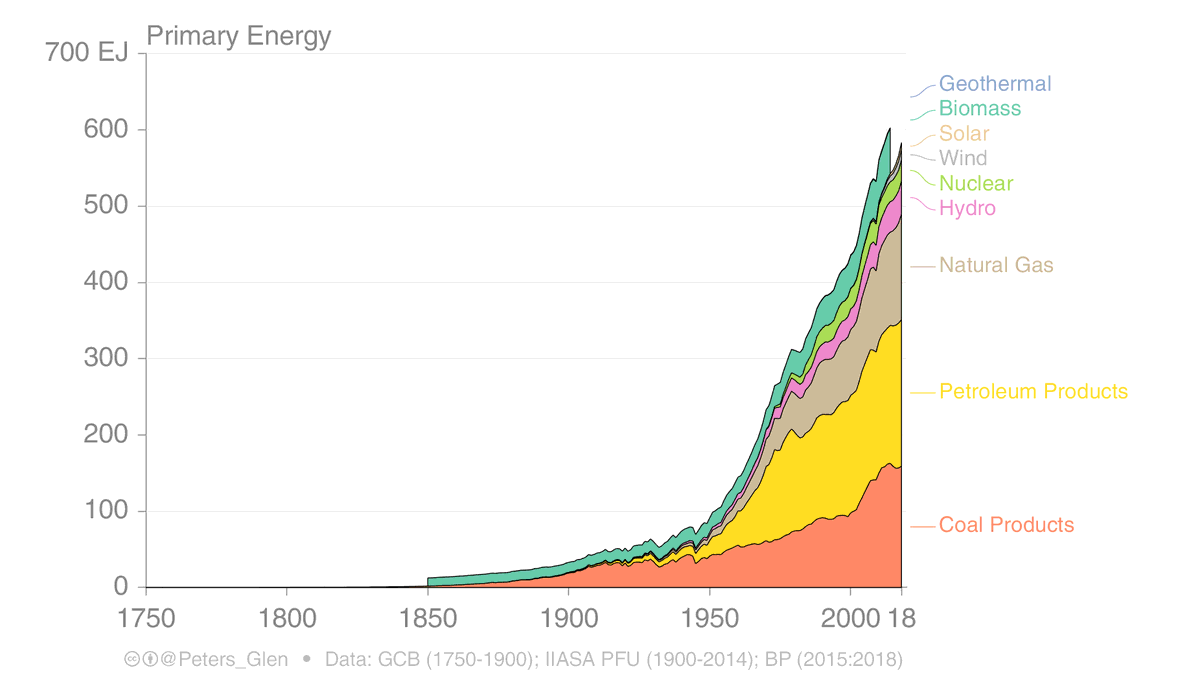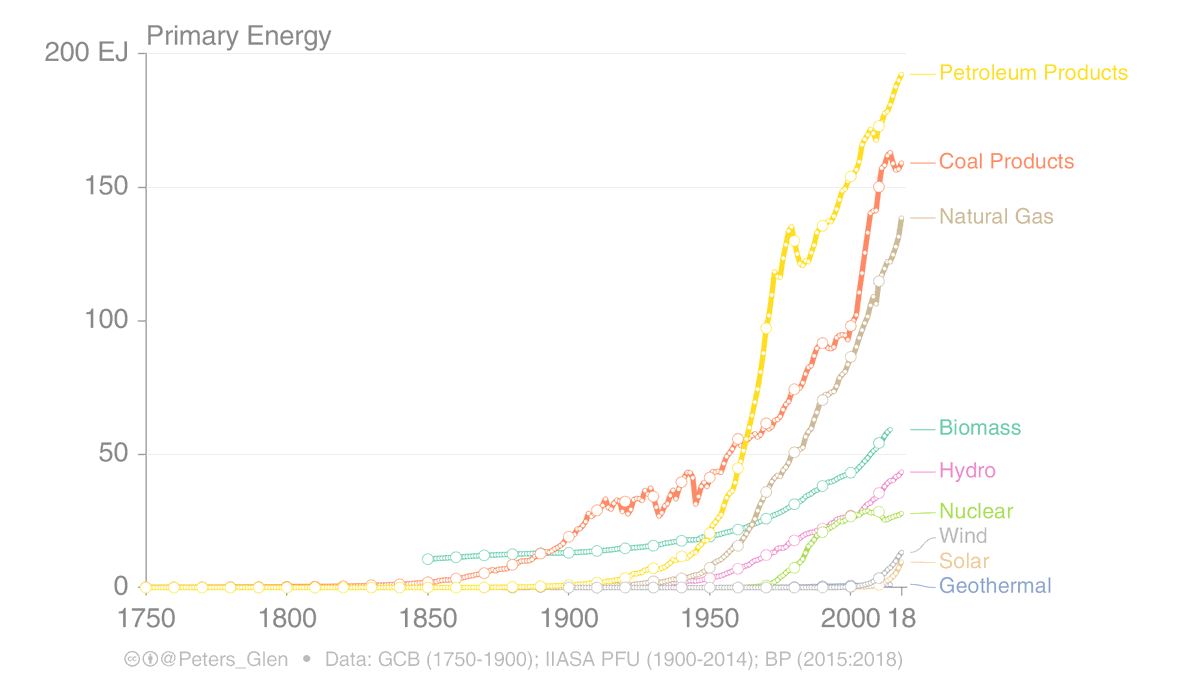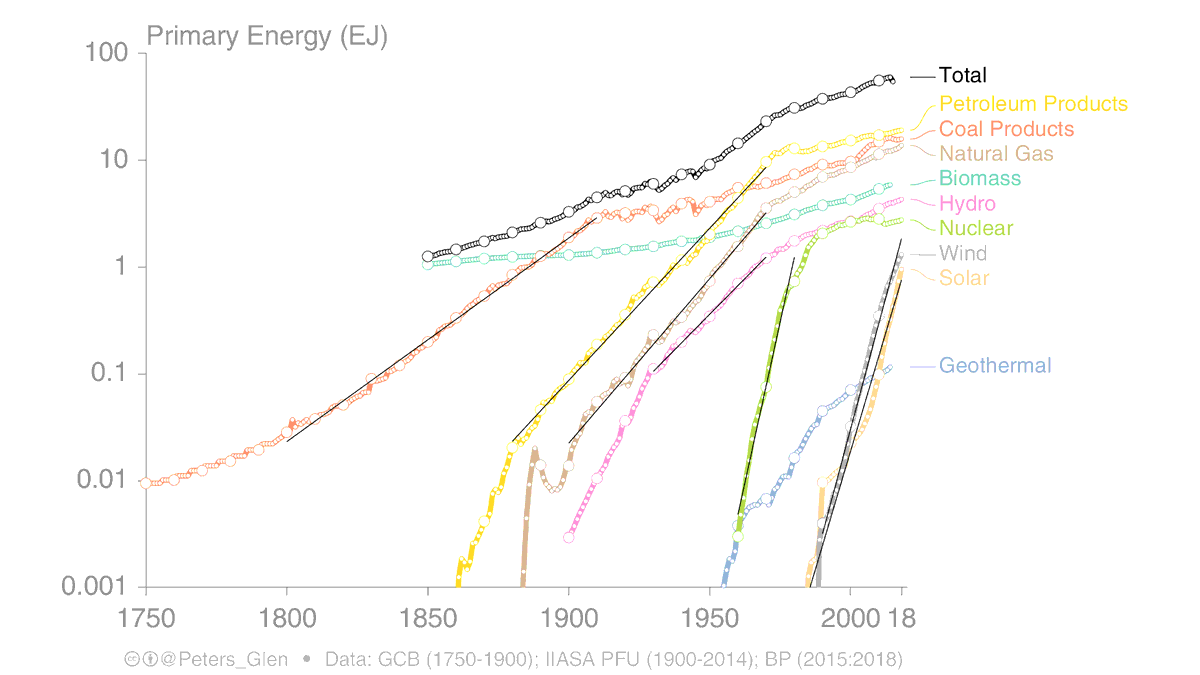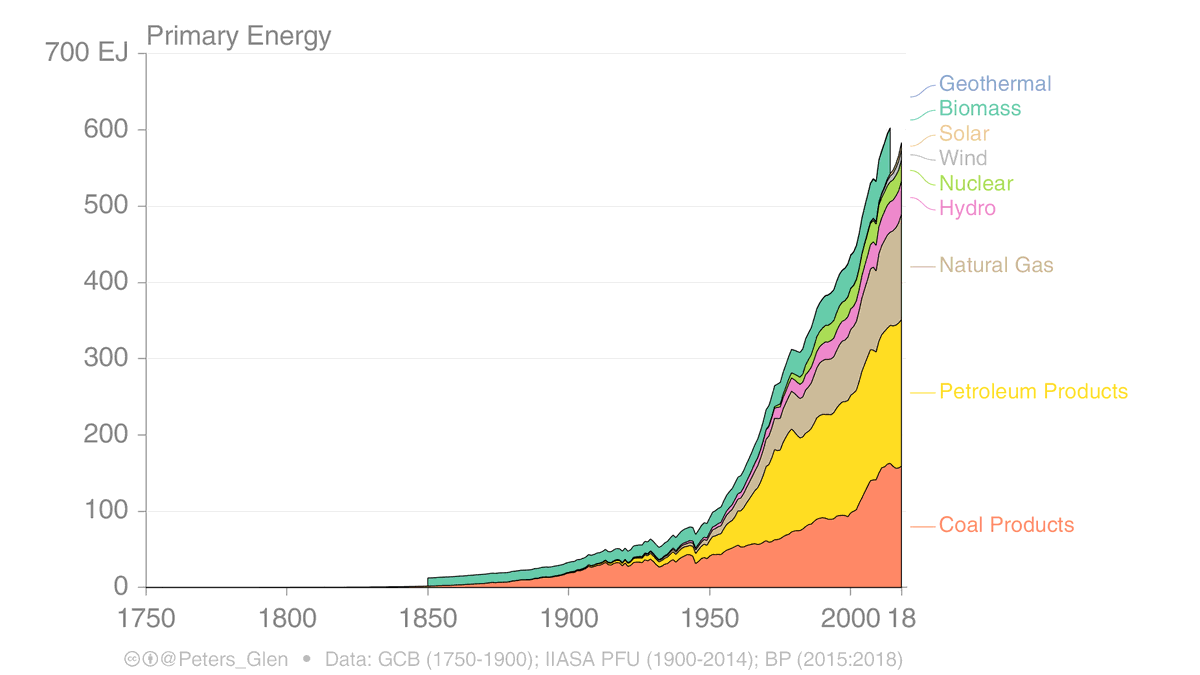1. Will energy technologies grow exponentially until they reach "materiality" & then have linear growth?
A common perception, but what does history say?
[Short answer: Old technologies are growing exponentially (not nuclear), just slower due to crowding out effects!]
Thread...
A common perception, but what does history say?
[Short answer: Old technologies are growing exponentially (not nuclear), just slower due to crowding out effects!]
Thread...
2. There was a paper in @nature in 2009 that used a "materiality" concept to say there will be a slow switch to low carbon sources.
I have been wanting to update their figure for some time, & see if their "laws" were correct.
https://rdcu.be/b4MOE
I have been wanting to update their figure for some time, & see if their "laws" were correct.
https://rdcu.be/b4MOE
3. They came up with two laws, essentially that technologies grow exponentially until they become 'material', then growth changes to linear.
This is used to argue that there are 'physical limits' to the growth of new (low carbon) technologies.
But what does the data say?
This is used to argue that there are 'physical limits' to the growth of new (low carbon) technologies.
But what does the data say?
4. I extended their figure back to 1750
* Technologies have "fast" exponential growth (black lines), then "slow" exponential growth (the lines are straight, just a different slope)
* Materiality does not seem the issue
* Technologies have "fast" exponential growth (black lines), then "slow" exponential growth (the lines are straight, just a different slope)
* Materiality does not seem the issue
5. "Exponential growth proceeds until the energy source becomes 'material'...~1% of world energy"
I am not sure where this 1% comes from. Basically, all energy sources have grown exponential well past 1%. Coal 60%, oil 40%, gas 15%, nuclear & nuclear 5%, while solar & wind grow!
I am not sure where this 1% comes from. Basically, all energy sources have grown exponential well past 1%. Coal 60%, oil 40%, gas 15%, nuclear & nuclear 5%, while solar & wind grow!
6. I think Kramer & Haigh misdiagnosed the issue:
Around 1970 many technologies stop *fast* exponential growth, at quite different levels. I think this was a "crowding out" effect. Too many technologies fighting over the energy space for the given demand.
Around 1970 many technologies stop *fast* exponential growth, at quite different levels. I think this was a "crowding out" effect. Too many technologies fighting over the energy space for the given demand.
7. In a sense, the growth in total energy demand will "cap" the growth rate of the individual energy sources. The more energy sources there are, the more there will be limits on fast exponential growth.
[Noting, cheap energy could lead to faster growth in total energy demand]
[Noting, cheap energy could lead to faster growth in total energy demand]
8. Bioenergy dominated the energy system until ~1900, then coal until ~1950, & since then, many energy sources are sharing the energy mix (fossil fuels dominate).
Historically, we are in an unusual situation where there are so many different energy sources.
Historically, we are in an unusual situation where there are so many different energy sources.
9. Each new energy source *adds* to total energy demand, no energy sources have disappeared (historically, perhaps animal & human power).
It is the growth in total energy demand & diversity in the energy mix that limits the growth in the underlying energy sources.
It is the growth in total energy demand & diversity in the energy mix that limits the growth in the underlying energy sources.
10. The ability for renewables to *displace* fossil fuels (not add to existing supply) will will dictate whether renewables can grow exponential beyond "materiality".
If fossil fuels are taken out of the energy system, there is more space for renewables to grow exponentially!
If fossil fuels are taken out of the energy system, there is more space for renewables to grow exponentially!
11. There is probably no physical reason why we can't have 100% renewables, just like we once had 100% bioenergy, 50%-50% bioenergy-coal, etc
The only limit is the one in our heads...
There may be other limits (cost, impacts, etc), but they are different questions.
The only limit is the one in our heads...
There may be other limits (cost, impacts, etc), but they are different questions.
12. Next time someone tells you that history says renewables will shift to linear growth, you can tell them that is only the case if they want to keep burning coal, oil, or gas!
Take fossils out of the system, renewables will grow exponentially to fill the gap!
Take fossils out of the system, renewables will grow exponentially to fill the gap!
13. For the data nerds. This is based on the @IIASAVienna PFU database https://tntcat.iiasa.ac.at/PFUDB/dsd?Action=htmlpage&page=about, extrapolated back with @gcarbonproject for fossils & https://agupubs.onlinelibrary.wiley.com/doi/10.1029/2006GB002836 for bio, & forward with BP.
If anyone has better data sources back in time, let me know!
If anyone has better data sources back in time, let me know!
14. My rant is perhaps of interest to people like @ramez, @MLiebreich, @AukeHoekstra, @ChristianOnRE, etc...
/end
/end

 Read on Twitter
Read on Twitter![1. Will energy technologies grow exponentially until they reach "materiality" & then have linear growth?A common perception, but what does history say?[Short answer: Old technologies are growing exponentially (not nuclear), just slower due to crowding out effects!]Thread... 1. Will energy technologies grow exponentially until they reach "materiality" & then have linear growth?A common perception, but what does history say?[Short answer: Old technologies are growing exponentially (not nuclear), just slower due to crowding out effects!]Thread...](https://pbs.twimg.com/media/EaNydjOWAAEn8wh.png)
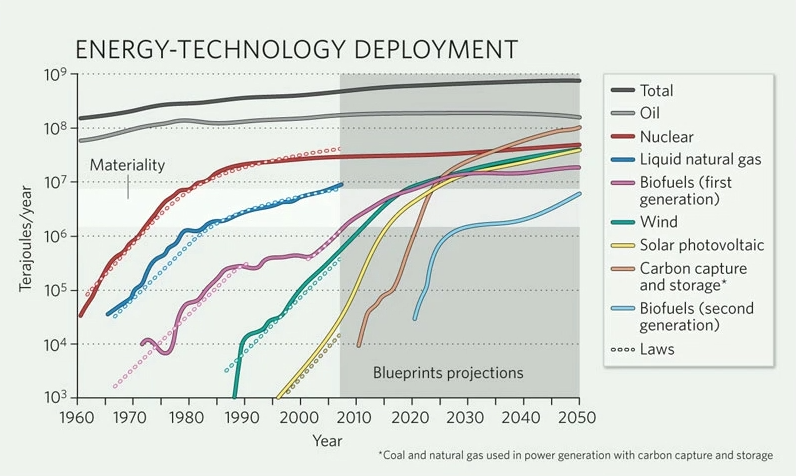
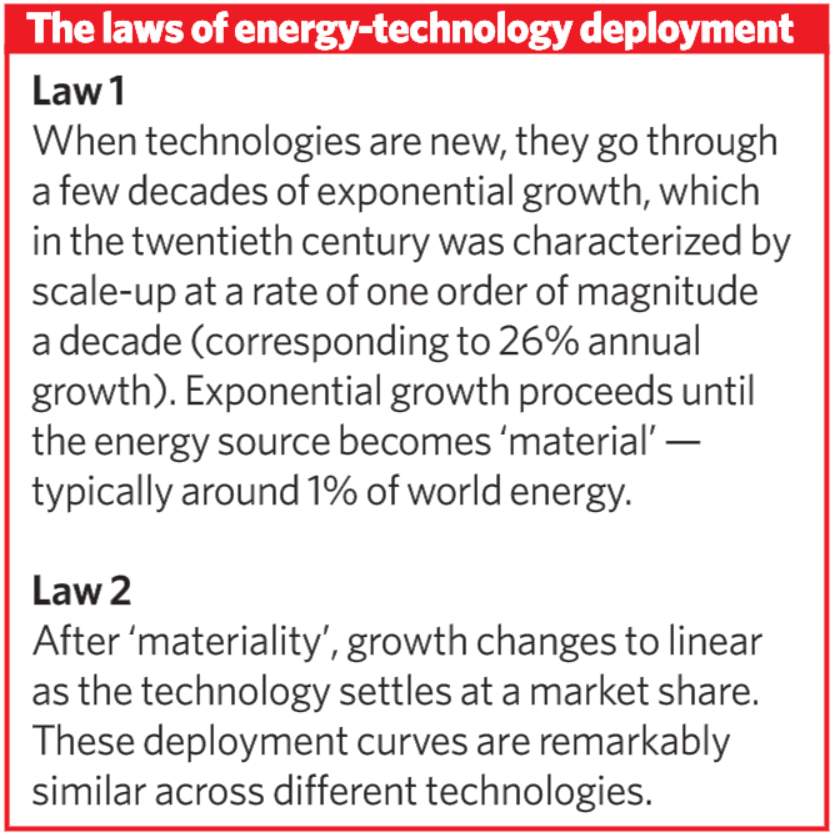
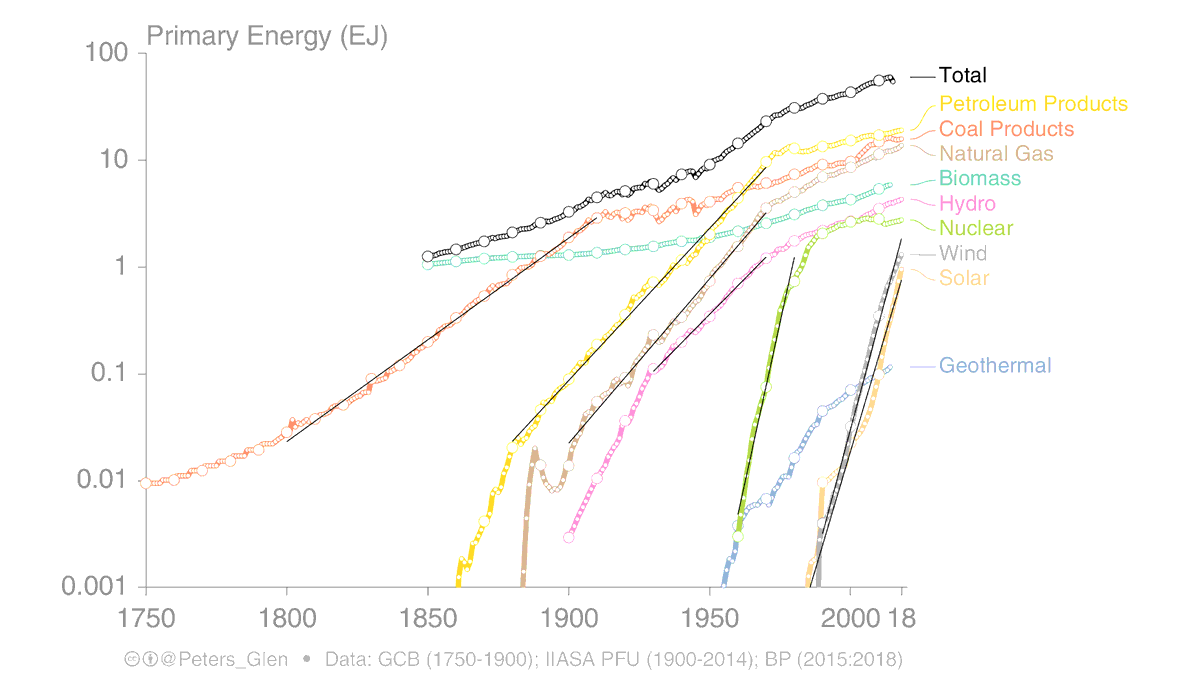
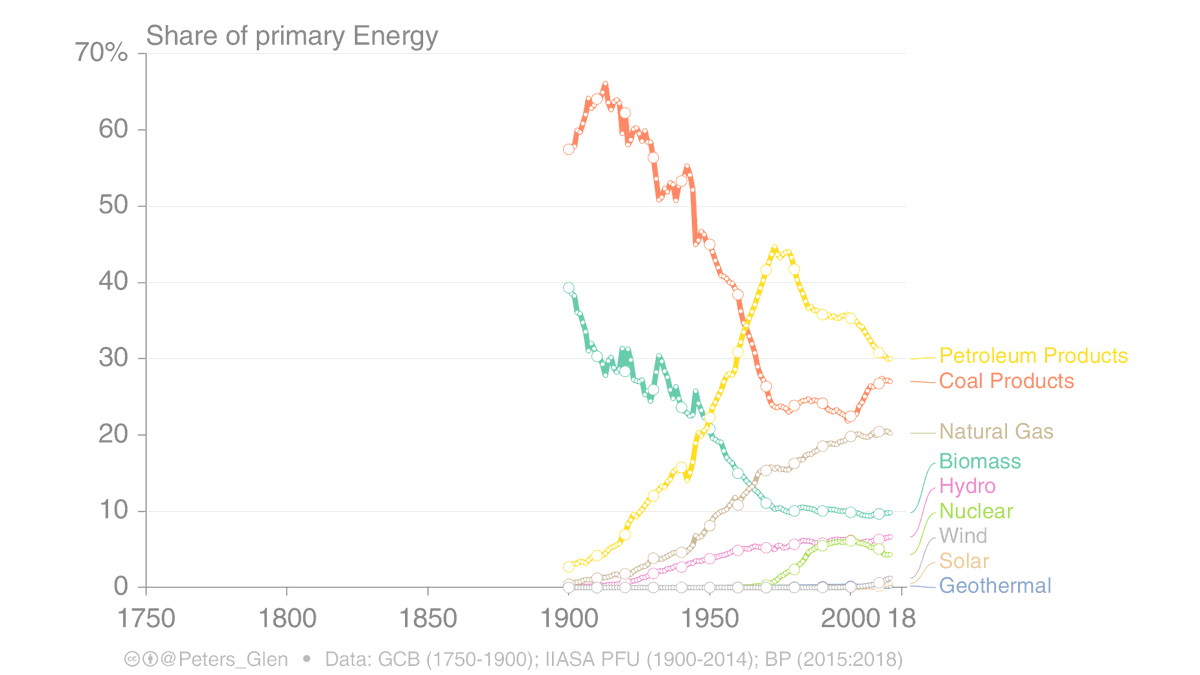
![7. In a sense, the growth in total energy demand will "cap" the growth rate of the individual energy sources. The more energy sources there are, the more there will be limits on fast exponential growth.[Noting, cheap energy could lead to faster growth in total energy demand] 7. In a sense, the growth in total energy demand will "cap" the growth rate of the individual energy sources. The more energy sources there are, the more there will be limits on fast exponential growth.[Noting, cheap energy could lead to faster growth in total energy demand]](https://pbs.twimg.com/media/EaN2nT6XkAEDSrJ.png)
